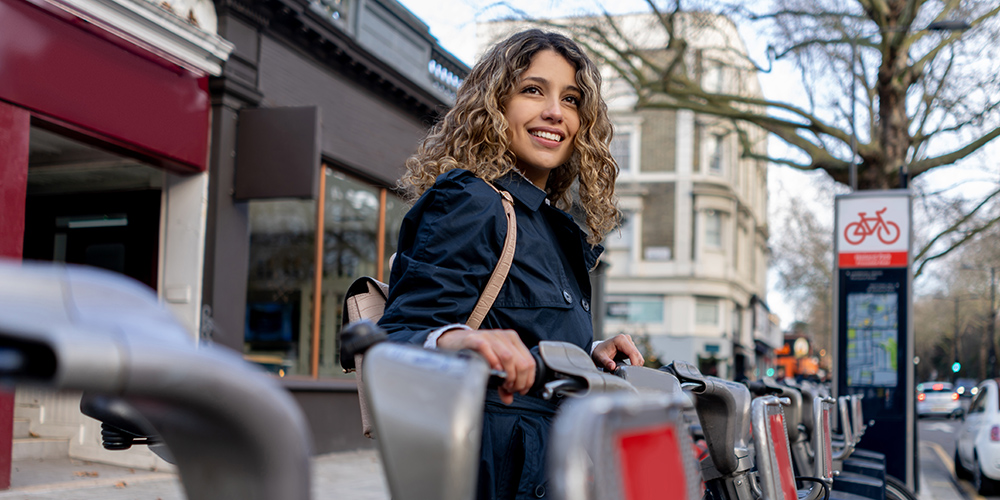Innovative partnerships support equitable access to shared bikes, scooters, and other micromobility vehicles
UCLA researchers offer actionable steps to expand affordable micromobility options and improve infrastructure in mobility-disadvantaged communities
Photo by Hispanolistic / iStock
By Mara Elana Burstein
Are you renting shared bikes or scooters to travel to and from transit stops and for other short trips?
Millions of people are using small, low-speed, human- or electric-powered transportation devices — also known as micromobility. So much so that its use has exploded over the last decade. But despite exponential growth, access to these devices is limited among travelers that are low-income, Black, Indigenous, and people of color (BIPOC).
To help address this inequity, the UCLA Luskin Center for Innovation has released a report that highlights equity-oriented micromobility programs to provide access to shared bicycles and scooters in five U.S. cities: Denver, Minneapolis, Oakland, Pittsburgh, and Saint Paul. Drawing from interviews, the report offers pioneering models and actionable steps for government agencies, micromobility providers, and community-based organizations to expand access and affordability among low-income and BIPOC travelers and improve infrastructure in their communities.
The researchers assert that to make micromobility equity programs more accessible and affordable, cities and micromobility providers should take the following steps:
- Redesign equity programs, including pricing models, enrollment processes, memberships, and low-tech payment options;
- Engage mobility-disadvantaged travelers, with the help of community-based organizations;
- Integrate micromobility systems with mass transit, ride-hail/rideshare, etc.; and
- Eliminate, or integrate, equity program applications with existing social service programs.
“No one should be left behind in the mobility revolution,” said Doug Arseneault, graduate student researcher and co-author of the study. “This report offers innovative, replicable models and policies that could lay the foundation for the next wave of micromobility — one centered on equity.”
For example, a promising model to expand micromobility affordability is the Move PGH, a public-private partnership between the City of Pittsburgh Department of Mobility and Infrastructure and Spin. As part of Move PGH, the partnership launched a “universal basic mobility” program that offers low-income participants in a majority-Black community unlimited bikeshare use, five free scooter rides daily, no-cost transit rides, and other discounts, in collaboration with the community-based organization, Manchester Citizens Corporation.
The researchers recommend cities and micromobility providers improve micromobility infrastructure in low-income and BIPOC communities in the following ways:
- Create dedicated micromobility parking and protected bicycling zones;
- Establish data-driven systems for distributing vehicles;
- Partner with community-based organizations to reach mobility-disadvantaged travelers; and
- Invest in pedestrian-oriented infrastructure that facilitates seamless transfers between transportation services.
An example model for improving micromobility infrastructure is the Mobility Hub pilot program in the City of Minneapolis. To maximize shared bicycle and scooter use, program managers analyzed equity-centered data, partnered with community-based organizations to engage stakeholders, and prioritized hubs at high-frequency bus stops at low-income, majority-BIPOC community gathering places.
To learn more about the findings, access the report here. For more research on equity-centered clean transportation, visit our transportation webpage.








